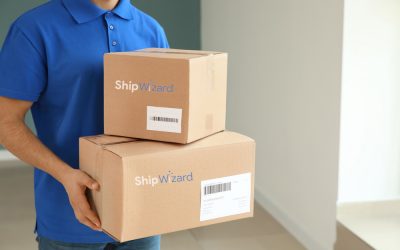Whether anyone is happy to admit it or not, the fact of the matter is that Amazon has turned the novelty of fast, free shipping into a consistent fact of life for eCommerce shoppers today.
Where once delivery in a week was considered acceptable, today’s online customers are demanding increasingly fast speeds. In recent years, the vast majority of shoppers have come to consider “fast shipping” to mean two-day delivery.
How Can an SMB Compete with Amazon’s Free Shipping Speeds?
There’s a real anxiety among many small- to medium-sized businesses that they’ll not be able to compete with Amazon for speed and parcel shipping prices.
It’s not a fear that’s unfounded, but it shouldn’t keep you awake at night. The truth is that even though you hear lots about how fast Amazon can walk through order fulfillment, there are plenty of 3rd party logistics companies that can help you reach similar speeds at low prices.
Good 3PLs are constantly focused on increasing their warehousing and distribution efficiency so that your orders are processed, packaged and shipped faster and faster. When that speed is made possible by automation, the prices remain affordable for SMBs like yours. Although Amazon led the way to faster shipping, the retail giant has not been the only game in town for some time.
There are a number of ways you can use free shipping without breaking your bank. Give these tactics a try:
- Offer free shipping with a certain dollar threshold. Many large retailers limit free shipping to a particular dollar amount. This is a very common practice, especially for fashion retailers that also have to handle a lot of returns. Your customers won’t be shocked if you ask them to spend $50, $100 or even $200 to access your fast, free shipping options.Your best bet is to start this offer at a price point where you can make a profit, but is also just beyond your average sale total so more customers feel compelled to buy just one more small thing to qualify.
- Use free shipping as a promotion. Not all eCommerce shops can afford to offer free shipping all the time, but you should give your visitors some way to earn it. Either offer regular coupons and special free shipping days or create a rewards program that will give your buyers a way to accumulate points that can be redeemed for shipping rewards.Both options give shoppers a way to avoid paying for shipping often enough that they might not mind to pay for it when they must.
- Make it worth paying for shipping. A third option that some retailers have chosen is to simply not offer free shipping, ever. Some retail experts would argue that this is a dangerous practice, but there are specific cases where it can work. Say, for example, that you sell a unique item that can’t be reproduced by sellers on Amazon.Whether that’s artwork or custom craft items, what you have to sell is only available through your store so if someone wants it, they have to get it from you and pay a reasonable shipping rate. Some will certainly opt out, but if you invest in marketing and product development, your true fans won’t be too put out.
Amazon has changed the way that retailers interface with their shoppers and even how those shoppers feel about paying for shipping. As with all things in eCommerce, though, just because Amazon’s doing it doesn’t mean you can’t or that you even have to try to compete. Free shipping can come in a variety of other forms or you can simply make it worth it for consumers to pay to ship your product.









